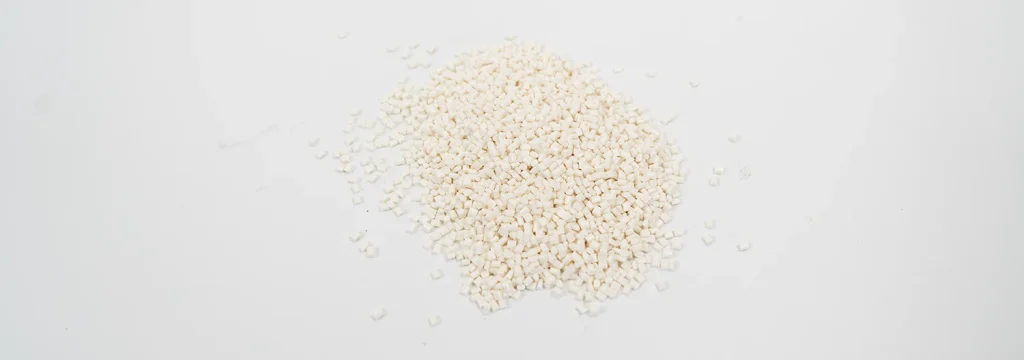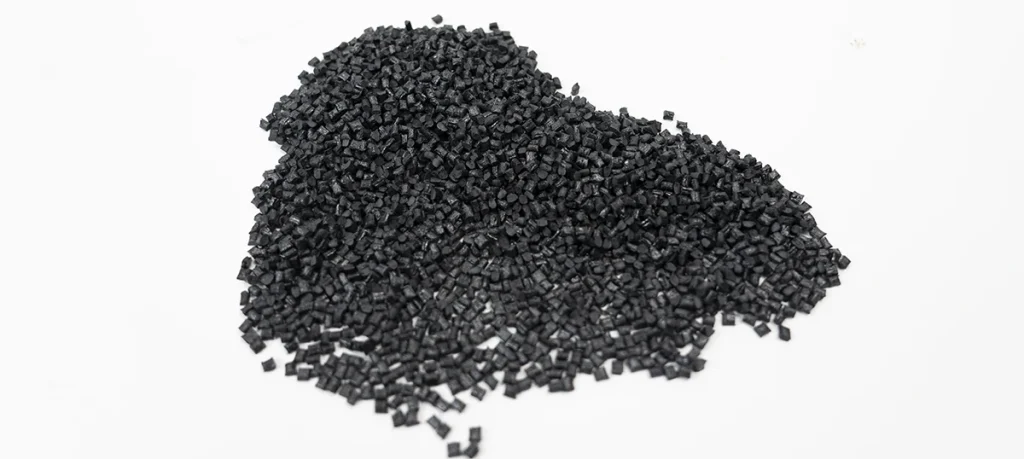The injection molding is a pillar of modern manufacturing. There are countless processes that rely on injection in the manufacturing sector. It is revolutionizing the production process, especially for plastic components, in diverse industries. Companies that have used injection molding have, in different ways, benefited from scalability and versatility. The injection molding is important for shaping raw thermoplastic. The shapes adopt the complex and price forms with unique repeatability. The entire process starts with the injection of molten plastic into a well-designed mold cavity. The molding takes place under high pressure. In environments that are in control, cooling of the plastics and their solidification lead to unique shapes. The scalability and versatility make injection molding key for multiple and large industries. Key industries that benefit are electronics, medical devices, automotive, and consumer goods.
The injection molding appeals to the complexity of the geometries and the efficiency it offers—the ability to regard it as reliable, hence the choice of manufacturing components. The objective is to attain durability, consistency, and high levels of precision. The complex structures in the vehicle automotive engines and other industries depend on injection molding. The process enhanced the production of parts that adhere to strict performance requirements. The objective does not hinder production efficiency and effectiveness.
Fundamentals of Injection Molding
The injection molding process starts with effectively designed engineering specifications, which are unique for each injection molding process. The designer’s role is key in the process. Their role is in assessing and selecting materials that are in line with the environment and functional requirements. Key considerations such as strength, chemical resistance, flexibility, and thermal stability are important in the process. Weighing their impact is vital for optimal performance and longevity. The impact and corrections are key in the early stages of the process.
Design For The Mold
Another key aspect is the design of the mold. The design entails different facets, such as layout cooling approaches, that enhance heat dissipation. Excess heat is harmful to the overall product display. Additionally, the gate placements in the regulation of material flow to the cavity are important in the minimization of defects and flash. More advanced CAD software enables the designers to foster the mold’s filling process. It also enables prediction issues that can emerge, including sink marks and air traps. The objective is to optimize the mold design to support effective manufacturability.

Process Parameters
The process parameters, including the temperature, pressure, speed, and profiles, are important for part dimensions. They are also important to the attainment of mechanical properties, part dimensions, and surface finishes. Comprehensive measures of quality result in adhering to strict specifications. The measures include dimensional inspections, material testing, and numerous functional assessments. The specifications extend to those that are set by regulatory bodies.
The primary role of injection molding is to support enhanced planning and detailed design methodologies of the part and products. It also enhances adherence to support practices related to the manufacturing process. Manufacturers are responsible for attaining superior products, the required operational efficiency, and competitive advantage. Effective injection molding ensures that products developed achieve the company’s objectives.
Material Selection for Injection Molding
The choice of material is a major pillar for the success of injection molding. Some materials mix, while others are applicable singly. Numerous materials actualize the injection molding process. The thermoplastics are unique based on their melting abilities and reforming without impacting natural properties. However, the choice of the materials is affected by numerous factors.
ABS (Acrylonitrile Butadiene Styrene)
The resistance properties of ABS make it an essential material for injection molding. It is important for use in areas where durability and strength govern the choice of material. ABS provides an appropriate stability for the dimension. It also ensures that the materials withstand extreme temperatures. The low and high temperatures altogether have an impact on the material stability in injection molding.

Polycarbonate
Polycarbonate is key in injection molding for clarity, heat resistance, and impact resistance. It is applicable for areas where transparency is key, including safety goggles. Polycarbonate displays properties of insulation from electricity, hence key in electrical-related activities.

Polypropylene
Polypropylene is a lightweight material. Other traits include chemical resistance and affordability. It is common for automotive vehicles and different consumer goods. Repeated sterilization cycles are not reactive, so it is important to understand them. Polypropylene provides fatigue resistance, and part of its properties allow for easy molding. Polypropylene provides the required fatigue resistance, making it cost-effective.

Nylon (Polyamide)
Nylon is keNylonptional due to its toughness, exceptional strength, and unique resistance and dance abilities. The material has extreme mechanical properties, hence suitable for use. Its durability and impact resistance are high especially on one element and bearings.

The materials’ properties have to be in line with the functional demands. They also have to recognize the different conditions in the environment and user expectations. Material costs and the choice of materials are significant factors that should adhere to the specified requirements. Processing abilities and regulatory compliance are also key. Recognizing these factors ensures the performance and sustainability of the product.
Achieving Dimensional Accuracy and Surface Finish
Surface finish and dimensional tolerances are key factors in injection molding., which is mainly used for parts with tight tolerances. Design strategies contribute to smooth ejection. Key strategies include draft angles, enhanced cosmetic appearance, and reduced part distortion. Different post-molding processes, including painting, laser, and etching, change the part surface. The objective is to comply with the laid standards.
Quality Assurance in Injection Molding
Upholding the repeated part quality is a pillar of the process of injection molding. Detailed assurance protocols comprise the dimensional inspections incorporating (CMM). It also comprises materials testing for durability, mechanical properties, and durability, as well as functional testing. The statistical process control (SPC ) methods track and ensure that important process parameters exist in real time to detect any existing differences. Also, it ensures that all the specifications exist during the entire product run.
Automation and Industry 4.0 Integration
Industry 4.0 technologies have continuously had an impact on injection molding. Key areas are automation, data insights, and connectivity. The smart manufacturing solutions include real-time monitoring, part handling, and predictive maintenance algorithms. Other manufacturing solutions also include reduced downtime, production efficiency, and increased Overall Equipment effectiveness (OEE). The inclusion of the twin technology is responsible for different virtual simulations of the production scenarios to realize the key issues and process parameter optimization effectively.
Product Design In Injection Molding
Product design in injection molding is among the critical aspects of the process. It impacts manufacturability, effectiveness, and general performance. An Effective Injection molding product relies on different factors. These factors are structural integrity, material selection, functionality, and aesthetic appeal. Manufacturers balance innovation and manufacturing limitations. The outcome has to be a high-quality, cost-efficient, and cost-effective product.
Product Design Material Consideration
The selection of appropriate materials is a key determinant of the overall product design quality in injection molding. The choice of materials also impacts weight, flexibility, durability, and resistance to environmental factors. Polycarbonate PC, polypropylene, polyethylene, and acrylonitrile butadiene styrene (ABS) are common materials. The products’ characteristics fit effectively for moldability and strength. They are applicable in different materials for different purposes.
The properties of the materials have to be based on the desired application of the product. Properties such as resistance, chemical compatibility, and thermal stability determine types of product designs. For instance, health devices demand the use of biocompatible materials. On the other hand, the automotive industries demand products with wear and high heat resistance. The manufacturers and designers include fillers like carbon fibers and glass. The objective is to reinforce the mechanical properties and minimize shrinkage.
Structural Integrity and Wall Thickness
The structural integrity of injection molding depends on principles of proper design. Uniform wall thickness is important for overcoming defects like marks, sinks, and inconsistent cooling. Thin walls lead to faster cooling rates. They also help improve product efficiency and short cycle times. Thicker walls, on the other hand, help with durability.
Effective strength demands excessive materials, gussets, and ribs in the design process. The theories support thin sections and overcome deformations. Small transitions from thick walls are important in minimizing concentrations of stress. It is instrumental in enhancing longevity and functional considerations. Aesthetic appeal is crucial in determining consumer-driven products. Key properties include the colors, texture, and proper finishing, which is key for marketability. The product texture can help hide imperfections and improve grip. On the other hand, it is instrumental in aiding high-gloss finishing, focusing on premium applications.
Some elements are important in the design process. The design process has to prioritize functionality. Elements such as integrated fasteners, snap-fit connections, and ergonomic grips increase the user experience and are important in the product’s usability. Effective gating and venting approaches reduce defects. The product’s appearance and role are not compromised in the long run. The principles of the design process are, therefore, in use.
Design for Manufacturability (DFM)
The Design for Manufacturing is a key proponent and guide in injection molding of products. The design for manufacturability is important for optimum, cost-effective, and efficient production. Manufacturers must incorporate factors like cycle time, mold complexity, and ease of assembly. Minimizing the undercuts and complexities that are irrelevant is key and minimizes the costs of production. The angles of the draft enhance easy part ejection from the mold. It overcomes any damages and fosters a smooth process and operations. An effective designed gating system reduces the waste of material. It is also important in enhancing consistency. The use of the DFM principles enables manufacturers to produce quality products. Also, they minimize the expenses and lead time.

Product Application in Various Industries
Injection molding products are applicable in different sectors and areas. The objective is to enhance efficiency and effectiveness. Therefore, durability, quality, and efficiency are key industry determinants.
- Automotive Industry: Proponents like bumpers, dashboards, and door panels need high impact resistance and thermal stability. Material selection is important for quality in this industry.
- Medical: Biocompatibility and precision are key in the medical industry. These qualities determine the make of syringes, diagnostic tools, and implantable devices. Product application in the medical field and stories are key priorities for manufacturers.
- Consumer Electronics: The objective of the products is durability, electromagnetic shielding, and heat resistance. Key products under this category use enclosures and connectors. The consumer’s choice and selection of properties determines the overall long-term product design choice.
- Packaging: The sectors rely on the effectiveness of bottles, caps, and food containers. Material selection focuses on recycled labels and lightweight plastics. The different packaging properties focus on variations from one sector, entity, and distributor.
Sustainability
The product design in injection molding is currently hinging on sustainability components. The use of biodegradable plastics is becoming a determinant of material selection. Energy efficiency and recycled materials also determine product designs that incorporate environmental impact. The designs that depend on eco-friendly products incorporate material life cycles. They also determine the reduced waste production, end-life disposal, and material life cycles.
Customers within the industries are also increasingly focusing on sustainability and other factors. Future innovations in injection molding include additive manufacturing integration. They also have smart materials and multi-material molding for product designs. The new developments in simulation software offer designers the capability to determine defects. They can also optimize flow and minimize prototyping costs. The advancements add to high-performing e and efficient product designs. Development designers must improve the injection molding process and make effective products for different industries. The strategic product design principles offer manufacturers functionality, quality, and sustainability. Injection molding continues to be a versatile and efficient approach for producing innovative, diverse, and high-quality products.
Conclusion
The process of injection molding in product designs is part of the ever-changing intersection of engineering, science, and art. It incorporates the principles of material science, quality assurance, and design methodologies. It includes quality assurance approaches, design manufacturing, and sustainable manufacturing. The process of continuous learning, collaboration, and discipline leads to injection molding evolution, resulting in new products. It is a tool and pill for modern manufacturing in the overall global economy. The emerging technologies of injection molding products form part of future innovations. The objective is to increase production agility, sustainability, and quality assurance. The additive manufacturing approaches provide new room for rapid prototyping. The objective is to develop customized production solutions.






























